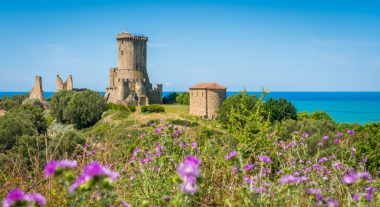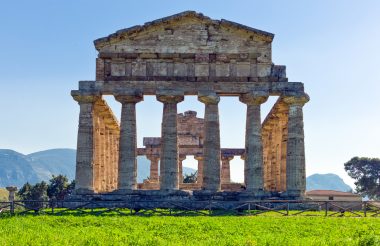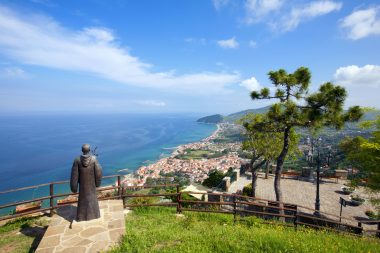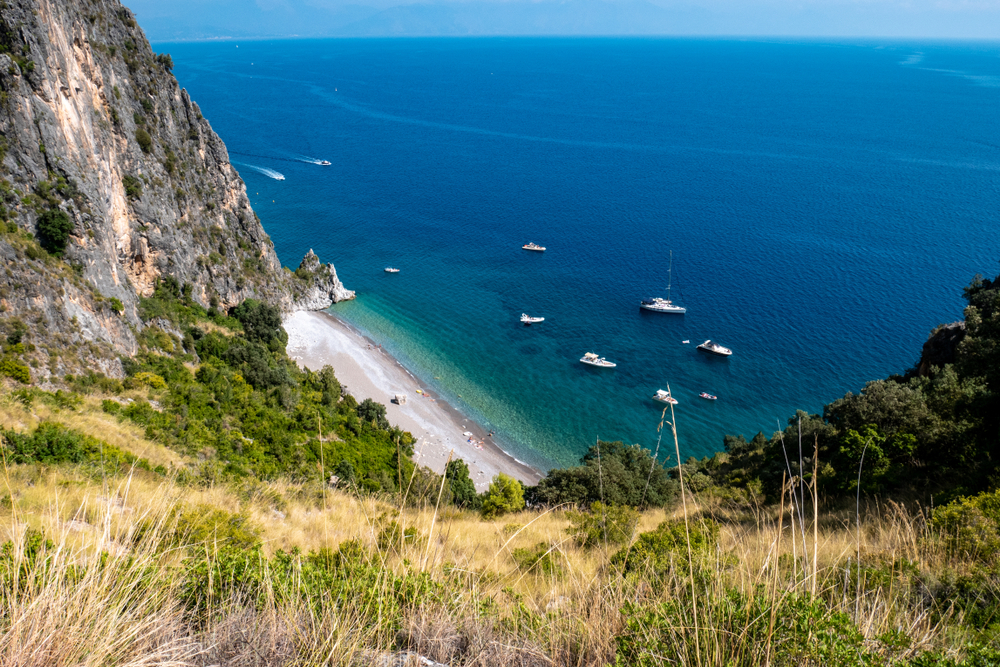Anyone who has passed the southern periphery of Naples will get closer and closer to their holiday dream. Hardly any other region of Italy has retained its original charm to such an extent as Cilento at the foot of the Apennines with its unique national park, the second largest in the country. It can boast of having been included in the UNESCO World Heritage List. Cilento looks back on an eventful history. It can be seen, among other things, in the ruins from Roman and Greek times.
Campania felix – happy landscape
The Tyrrhenian Sea is the natural barrier of the Campania region, and the rugged mountains, picturesque bays, green forests and babbling brooks inspired the people of Rome in ancient times to give this enchanting region an extraordinary name: Campania felix – the happy landscape. And to this day, the former character of Cilento has been preserved. If you enjoy your holiday here, you can look forward to nature that always presents itself in a new guise. It is the diversity of the landscape that distinguishes this “happy” region at the southern tip of Italy.
Picturesque and sleepy villages

Hikers in the Cilento area rave about the dense oak and chestnut forests that have become a feature of Campania. The picturesque villages sometimes duck under the protection of striking rocks, and the fishing villages by the sea seem as if international tourism has never stopped by here. Some seem sleepy at first glance, but the bars and restaurants have gained an excellent reputation almost everywhere. Pasta creations and, of course, pizza are on all trattoria menus, and at the foot of the magnificent cliffs there are always bays that invite you to swim, surf, dive and snorkel.
Roman and Greek influences in Cilento
Where the beaches are washed by mostly calm waves, the shore zones have been given a special name: Mythological Coast. Legend has it that none other than the legendary Odysseus was passionate about this part of Italy, and the culinary influences of Roman and Greek cuisine can be found in many of the dishes on offer: white figs, lime cakes, mushrooms and truffles from the woods and, of course, the fruits of the sea. The traditional cuisine of the south has a firm place in the Cilento region and is deeply rooted in the consciousness of gourmets.
Temple in honour of Hera and Neptune

Archaeological sites can be found in the Vallo di Diano: Certosa di Padula, Velia and Paestum. They also received a place on UNESCO’s World Heritage List. The remains of the settlement from Greek times can be seen there. The impressive Padula Charterhouse is also worth seeing. Paestum is one of the most important complexes of Magna Graecia and was once built in honor of Poseidon. The Archaeological Museum houses numerous exhibits from that period of Italy’s history. Of the three Doric temples, the Hera Temple from 530 BC stands out. Scientists argue about whether it was dedicated to Hera or Neptune. The Porta Rosa is the most photogenic monument of the Acropolis.
Cilento – Flora and fauna in the large national park
Friends of flora and fauna will get their money’s worth in Cilento, especially in the large national park. No less than 1,800 mostly wild plant species were listed here. The park is apparently an ideal habitat for lush vegetation, and it is also home to numerous animals. On the 180,000-hectare site, there are huge forests and rushing rivers as well as deep gorges and numerous monasteries. Paragliders can be found there – but also the sympathizers of an almost always nerve-tickling rafting on the wild waters of the rivers. The Cilento National Park also offers excursions with horses and exciting bike tours. And high above the forests, the peregrine falcons typical of the region almost always circle.
Stalactite caves and picturesque seaside resorts

The Grotta dei Pertosa is one of the most powerful and worth seeing stalactite caves in Italy. Excursion boats depart from numerous ports in the region to the azure caves of Cilento. One of the seaside resorts of Cilento favoured by tourists is the town of Palinuro, which also owes its fame to the many caves in the area. But also its enchanting stretches of beach. The Baia del Buondormire is probably the most romantic beach on the entire coast. It convinces with its clean and crystal clear water and its good infrastructure with nice bars and cafes. Also in Palinuro there are some testimonies of the ancient past. A colonial Greek settlement was once built here. If you are travelling by car in the Cilento region, you should not miss the striking Cape Palinuro. This point plays an important role in Greek mythology.


